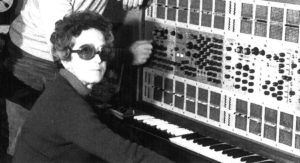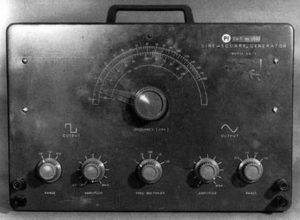Il video dell’intervento di Laura Zattra dell’11 ottobre su Teresa Rampazzi è visibile al link seguente: https://www.youtube.com/watch?v=Sek8tl1hmSQ
Grazie a Johann Merrich e a SoundMit per l’invito.
Il video dell’intervento di Laura Zattra dell’11 ottobre su Teresa Rampazzi è visibile al link seguente: https://www.youtube.com/watch?v=Sek8tl1hmSQ
Grazie a Johann Merrich e a SoundMit per l’invito.
Today, the quadraphonic piece Fluxus by Teresa Rampazzi will be performed during the final concert of the 50th Darmstadt Summer Course. After 70 years, Rampazzi is back at the Ferienkurse (she attended the course also in 1954, 1956, and until 1959, according to historical sources).
Wed, 11 August 2021, 19:30h, Sporthalle Lichtenbergschule
Final concert of the 50th Darmstadt Summer Course.
CONCERT PROGRAM
Teresa Rampazzi: Fluxus (1979) – 10’40”
Electronic Music
Rebecca Saunders: Dust III (2018-21) – 65′
World Premiere of the version for several percussion players
More details of the concert here (also in livestream): https://internationales-musikinstitut.de/en/ferienkurse/festival/programm/dust/

About Fluxus, 1979
Spatialization: 4-tracks
Published LP EDI-PAN PRC S 20-16, Roma, 1984.
Premiere: August 1979, Certaldo (Italy).
Original analogue tapes: Teresa Rampazzi Collection, University of Padua (Italy).
Digitization/restauration of the analogue tapes by MARTLab, Florence (Italy).
Fluxus was realized in 1979 with the use of the language ICMS (Interactive Computer Music System), a software created by Graziano Tisato at the CSC – Centro di Sonologia Computazionale at the University of Padova for the synthesis (connected to Music5 program, one of the early computer music programs), the editing and mixing, connected with a video, whose functions and algorithms were selected by means of a light pen. Teresa Rampazzi made the spatialization directly during the mixing of the 4-tracks. She preferred an acousmatic listening experience during concerts. Her musical works would thus be diffused without any further changes, because she disliked the human gesture in live electronic music.
From Teresa Rampazzi’s concert program [based on a citation by Heraclitus]:
«Fluxus was born from the ambitious desire to seek and find a form more adherent to the means we possess today for making music, both at the technological level and the vision of the world that together have required and caused the birth of these means. The computer suggests to us forms that cannot repeat any past, and that reflect our Heraclitean philosophy, where nothing can ever go back. The acoustic signals, therefore, flow one from the other and after the other, in an evolutionary process without interruptions. The [synthesis] technique of Frequency Modulation has been used here precisely to express, even at the level of the microstructure, this instability and incessant transformation that prevents any pause and, in a certain sense, already destroys the traditional concept of structure. Momentary shortcomings of hardware [an IBM System/7 computer system functioning in differed time] and software [the language ICMS – Interactive Computer Music System] prevented a more radical transformation of the signal and undermined the continuity of the form, which still suggests the flow of a river, sometimes slow, sometimes impetuous, sometimes dense, sometimes sparse. The parameters of density, rhythm, range of heights were therefore taken into consideration». Teresa Rampazzi, 1979.

In 1952, 1954 and 1956 Teresa Rampazzi attends the Darmstadt International Summer Courses for New Music. During the 1952 edition she has the chance to hear Herbert Eimert’s speech, where he presents the equipment from the Studio for Electronic Music of the West German Radio in Cologne. Teresa is 37 years old, she still is an avant-garde pianist, but it is a small electronic instrument (a frequency generator) that strikes her. She understands that sound synthesis is the only way to go beyond the rigidity of tonal music. In her own words:
…I arrived at electronic music exactly at its birth, listening to its cries in the large Marienhöhe concert hall, in Darmstadt. (Actually the term ‘arrived’ is not correct because we never actually arrive anywhere, we are always on our way). […] So in that [Marienhöhe] Concert Hall, for the first time Eimert showed the public a small frequency generator. Musicians looked at it suspiciously and did not attach too much importance to it. For me, that little, insidious object would certainly grow, multiply and change [1].
1952 Ferienkurse edition is also one of the most famous editions: Boulez declares the “death” of Arnold Schoenberg’s aesthetics, the new generation of composers –Luciano Berio, Pierre Boulez, Karel Goeyvaerts, Bruno Maderna, Luigi Nono, Karlheinz Stockhausen, Bernd Alois Zimmermann – starts to claim the musical world’s attention. (and Teresa is for the occasion a member of the chorus of España en el corazón by Luigi Nono) [2].
The Electronic Music Studio at Westdeutscher Rundfunk (WDR) in Cologne was founded by the composers Werner Meyer-Eppler, Robert Beyer, and Herbert Eimert. EImert was also the studios first director. To read more on Herbert Eimert and the WDR Electronic Music Studio visit 120years.net